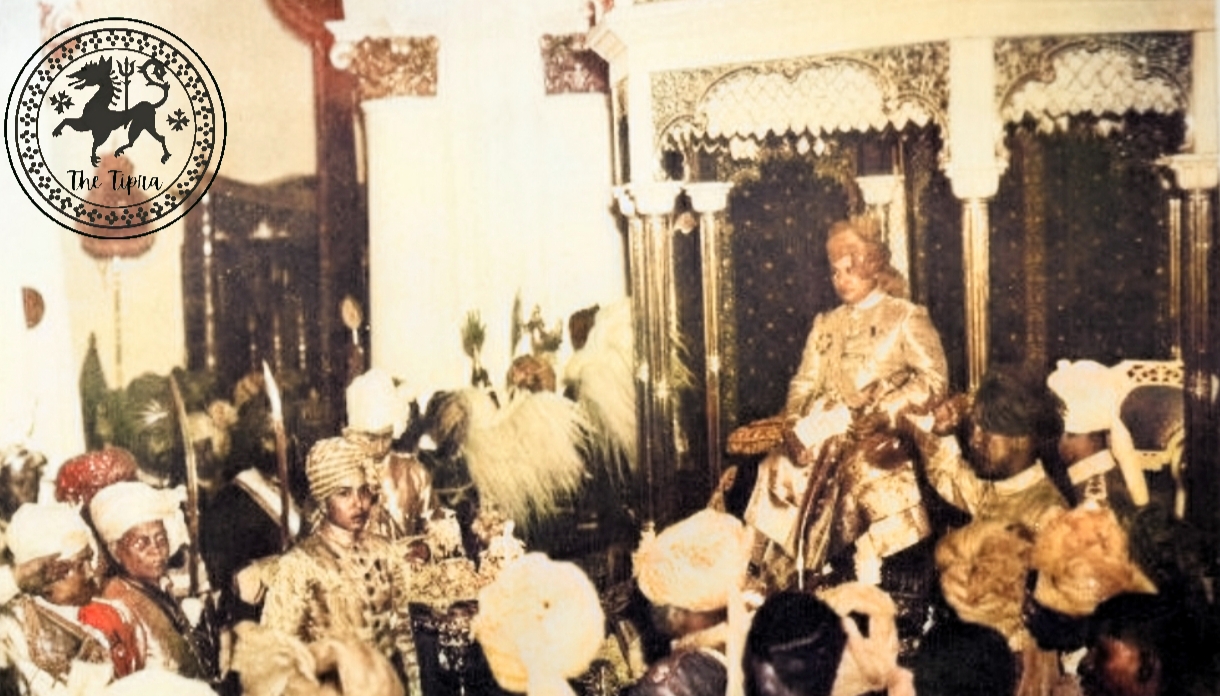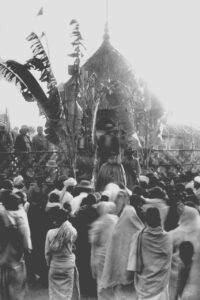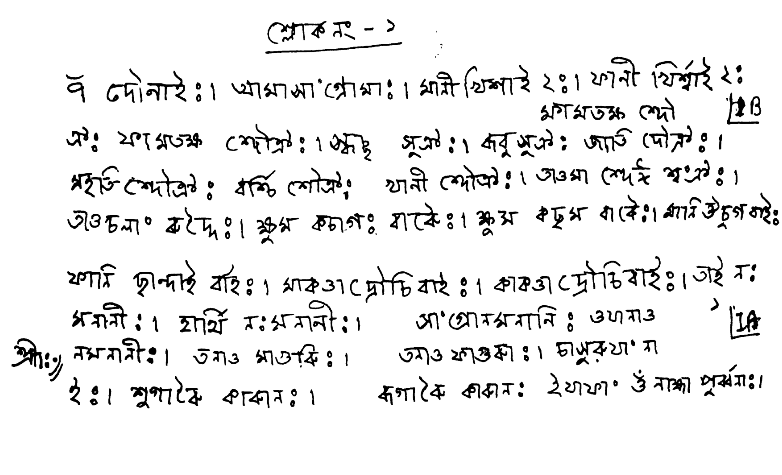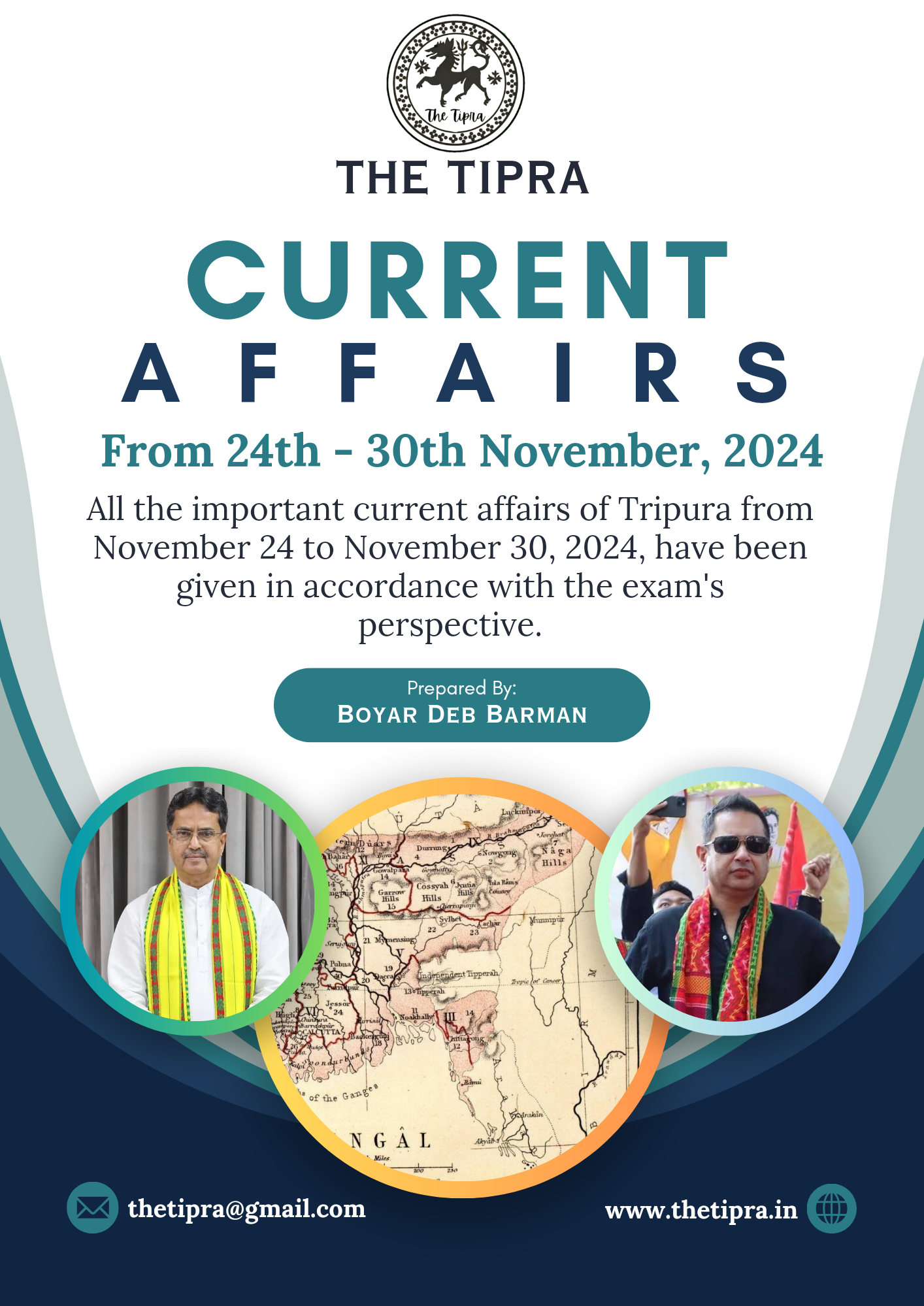
Hasam Bhojan: A State feast for the unity of Pancha Tripur and Halam Community
Hasam Bhojan, or feast, was a state dinner mainly organised for the interaction of hill chiefs, i.e., Sardars. In Tripura, the feast was popularly known as “Hasam Bhojan” in ancient times. It used to take place every year on the night of Vijaya Dashami during Durga Puja. All the hilly people and chieftains of Tipra were usually invited to this feast. Many people describe the meaning of Hasam Bhojan in different ways. Some say Hasam means unlimited food, so it is called Hasam Bhojan. Many people say that the pig is called Hasam because there was a system of slaughtering a large number of pigs for this feast; hence, it is known as Hasam Bhojan. According to Sri Rajmala, the conflict was raised because the modern scribes were trying to correct the language of ancient Rajmala. In the past, soldiers were called Hasam in Tripura state. Some modifiers of Sri Rajmala’s language replaced the “Hasam” word with soldier, army, etc., and the meaning of the word “Hasam” has been disrupted. The ancient Rajmala was not discussed by many people nowadays, or they were not given the opportunity to discuss it because the book was extinct. This is why many people forget the true meaning of the word “Hasam” and use it in various ways. In fact, the feast of the military department was called “Hasam Bhojan.” At that time, the hilly Tipras were all warriors, and as necessary, they were bound to descend on the battlefield for the welfare of the motherland. So that is why all the Tipras used to get invited to the feast, and no community was left out. It is difficult to determine during which reign of the King this feast was introduced. But there is no doubt that it was a very ancient practise. Behind this feast, there was a deep political embedded in it. The introduction of this policy had a special connection with the pacification of the state.

In ancient times, the hill tribes, especially the Kuki and Halam castes, were extremely mischievous and fierce in nature. They considered it a special virtue and indeed a duty to march on Vijaya Dashami. This journey was called “Hakuthum” in the language of the Halams. They banded together for the purpose of protecting this ancestral tradition, and with the intention of achieving their interests, they suddenly fell into the neighbouring villages on the night of Vijaya Dashami, killing people and looting all the people’s property. At that time, many towns were overrun and turned into forests due to their inhuman oppression. It would have been impossible to prevent the nuisance unless they were confined during the autumn festival, and there was no other way of keeping them all confined in one place at one time than by resorting to the imperialist strategy. Thinking about all these issues, the politically skilled King of Tripura introduced Hasam Bhojan. And yet that tradition had been continuously maintained. From the awakening day of Durga puja, hilly Tipras and Halams from distant places started coming to the capital. All the people, especially the chieftains of every community, were obliged to attend the royal feast at that time. Sardars were the root of mischief, so their presence was kept under close watch. A severe penalty was imposed on any Sardar who was absent without a valid reason. All who attended at the King’s invitation were considered dignified and certainly dutiful, so the number of absences was not excessive. Afterwards, as in the past, there was no fear of persecution by the hill people. For that reason, they were not pressured by the royal court to attend the feast. Nevertheless, every year, a large number of people used to attend this great feast.

One of the purposes of this feast was to make the uneducated and unruly hill people understand the importance of King-people relationships once a year. At that time, the people received Nazar from the King, and they were given objects, miscellaneous goods, and coins as royal gifts from the royal government. Among the Sardars, there was also a system of honouring a suitable person by conferring titles at that time. As mentioned earlier, this feast was held on the night of Vijaya Dashami. There were strict rules on what the people of a community would do on such occasions. The head of the Halam community was the master of this matter. According to Mahanta Sri Arjun Debbarma(1936 – 2022), he said, “I attended Hasam Bhojan in 1946, and the master of this feast was known as Wakma Raja. Nobody was allowed to eat anything unless Wakma Raja did not start drinking or eating. Even His Highness King Bir Bikram was not allowed to eat anything. After the completion of cooking for the feast, Brindiya used to go to invite Wakma Raja, the head of the feast. Before breaking the fast, everybody used to respect him, as he was the King of that feast. Once Wakma Raja broke his fast, everybody started scolding him by using slang. Whoever was present during the Hasam Bhojan was served with an earthen glass and a pot. In the Hasam Bhojan, the King used to serve us by giving us “Chuwak” in the earthen glass, but I did not drink because I was young. The feast used to be held only after the immersion of Durga idols.”
On the day and night after Vijaya Dasami, a meeting of the royal officials was held with them. In this meeting, there was a provision of gifts of liquor and clothes to the people. Afterwards, after discussing with the chiefs of all the communities the status of the hill dwellers, grains, carpus, etc., as well as the status of crops grown in Huk, social details, health status, happiness, peace, lack of grievances, etc., they used to discuss with the King. Sitting in the capital, the members of the royal family used to get such an opportunity only once a year to learn the exact details of the entire hilly province from the victims. With this system, all the conditions of the state were easily known. It was not possible to travel the entire state and collect them every year. Hasam Bhojan was also an advantage, no doubt about it. If there had been any confusion about the imposition of royal tax in the hill provinces, the argument about it could be solved.



